How Brutalism Changed the City
From grain elevators to art centers to university buildings, the impact of this bold 20th Century style can be seen in Milwaukee.
Brutalism is not a style that automatically endears itself to the observer. Even for those who appreciate it, brutalism remains a difficult style to like.
The name itself sounds harsh and confrontational, and those words have been readily applied to the style itself. The frank, unadorned and often imposing nature of most brutalist buildings, not to mention their unavoidable association with urban renewal and tendency to weather poorly — make this style a ready-made symbol for the perceived decline of urban life in the 20th century.
These associations are understandable, but also incomplete. Arguably more than any other style, brutalism represented the rejection of traditional conventions and experimentation that defined mid-century America.
The development of brutalism is inextricably linked to the technological advances of the late 19th century. The invention of reinforced concrete in particular gave architects and engineers far greater flexibility than ever before. Most prominently amongst the early pioneers of reinforced concrete were grain elevators. As celebrated events like the 1893 World’s Fair and the 1901 Pan American Exposition were presenting a vision of America adorned in classical grandeur these unintentional predecessors of brutalism were taking shape along the Chicago and Buffalo Rivers. Built more for efficiency than aesthetics, these monuments of industry were highly influential on the nascent modernist movement.
The Swiss architect and designer Le Corbusier, one of the singular figures of 20th century architecture and urbanism, was so captivated by the massive cylindrical forms of Buffalo’s grain elevators he dubbed them “The first fruits of the new age” and included images of the elevators in his seminal 1923 work Toward an Architecture. The term “brutalism” is actually derived from his term “béton brut,” a French phrase for raw concrete Corbusier used to describe his choice in material.
The Buffalo elevators referenced by Corbusier have a more-or-less contemporary example that can still be found in Milwaukee. Grain Elevator E (920 W. Bruce St.), also known as the Cargill Grain Elevator, was built in 1926 and is located along the South Menomonee Canal in the Menomonee Valley at the foot of S. 11th Street. The structure bears many of the hallmarks that would come to define the brutalist style including exposed concrete, external expression of internal functions, and a massive, imposing presence.
Grain Elevator E
Throughout the early to mid-20th century Le Corbusier would remain one of the most influential practitioners of the brutalist style. His 1925 plan for the redevelopment of Paris was particularly influential amongst American architects and urban planners. The plan’s most prominent feature, a series of sixty-story cruciform skyscrapers set in the center of broad green spaces intercut with high-speed expressways, was widely emulated in the United States, particularly in the design of public housing. The distinct round towers built by the Milwaukee Housing Authority closely follow this model, however its most direct application can be seen in the North, South, and West towers of UW-Milwaukee’s Sandburg Residence Halls (3400 N. Maryland Ave.). Built between 1971 and 1973 the towers owe a great deal to Corbusier’s vision. Cruciform in design, the towers are situated on a wide green space and, while considerably shorter than 60 stories, nonetheless dominate the skylines of Downer Woods and neighboring Shorewood.
Sandburg Residence Halls
UWM boasts the lion’s share of brutalist buildings in Milwaukee and it is no coincidence that much of its campus dates from its heyday of the mid-60’s to 70’s. Incorporated in 1956, UWM was a response to the dramatic rise in demand for higher education following World War II. Access to higher education was an important part of the Great Society, which facilitated the dramatic expansion of college and university campuses beginning in the mid-1960s.
UWM’s Curtin Hall (3243 N. Downer Ave., 1974) is a model example of form following function. The building’s spaces are so clearly articulated that one could confidently guess their relation and function without ever entering the building. Of particular note are the building’s north and south stairwells, which have been pulled out and turned into sculptural elements. This articulation of served and servant spaces was a hallmark of American architect Louis Khan, another profoundly important figure in 20th century architecture. Curtin Hall’s protruding windows and clearly articulated spaces are reminiscent of Khan’s design for the Richard’s Medical Research Laboratories at the University of Pennsylvania. In this building not only were the “servant spaces” of the stairwells pulled out and articulated, but also the exhaust and air intake shafts. This distinction between served and servant is a common feature of brutalism.
Curtin Hall
Just as UWM embodies brutalism’s heyday, its early years are represented by one of the city’s most iconic structures: The Milwaukee County War Memorial (750 N. Lincoln Memorial, 1957) which was designed by Eero Saarinen, the architect responsible for St. Louis’ Gateway Arch. Like Sandburg Hall, Le Corbusier’s influence can be seen throughout the structure. The boxy, reinforced concrete mass set atop a series of piloti with a recessed, transparent first floor is reminiscent of his Villa Savoye while the bulky, geometric piloti themselves are similar to those employed in Corbusier’s Unité d’Habitation. Also of note are the truly fantastic mosaics that were added in 1959 by noted Milwaukee artist Edmund D. Lewandowski.
Milwaukee County War Memorial
Throughout the 1960’s and 70’s brutalism would continue to be strongly associated with civic architecture exemplified by structures like Milwaukee’s Main Post Office (345 W. St Paul Ave., 1968), the Police Administration Building (951 N. James Lovell St., 1971) and Broadway Avenue/Water Street Bridge Houses (1982, 1987). When understanding why the style was so favored in the civic sphere it is important to consider the public role of architecture. Building is a highly symbolic act, and the choices in materials, style and context are essential components in communicating the builder’s message. From the perspective of government and civic leaders brutalism had a number of advantages. Superficially brutalist buildings, like the Bridge Houses with their unadorned surfaces and simple materials, were generally cheaper to build, saving money for the taxpayers. On a deeper level, however, it’s understandable why brutalism’s insistence on honesty in materials and form as well as its association with the progressive and the new would appeal to public minded individuals.
Milwaukee Main Post Office
Police Administration Building
Water Street Bridge House
Brutalism also provided for a great deal of flexibility depending on the context. For example, when viewed from Mason Street, the War Memorial is both frontal and axial, evoking the grandeur of more classical monuments. Simultaneously its open, transparent first floor invites the observer to come in, indicating that this is a public space of great importance or reverence. By contrast, the Main Post Office’s opaque and seemingly impenetrable exterior communicates a sense of security, as well as the message that, unlike the War Memorial, this is not a public place. Similarly, the Police Administration Building’s tall and imposing façade, enhanced by the use of weightily corner buttresses and dark recessed windows, communicates strength (or perhaps less charitably, intimidation).
The arts were another sector that experienced substantial infrastructural growth during the Great Society, of which the Marcus Center for the Performing Arts (929 N. Water St.) is an excellent example. Opened in 1969, the theater complex is notable for a couple reasons. First, although originally clad in marble (now limestone) instead of raw concrete, the complex was built by Harry Weese, the architect responsible for the design of the Washington D.C. Metro stations, widely regarded as one of the finest examples of brutalist architecture and one of the enduring legacies of the Great Society. The complex, like Curtin Hall, is another excellent example of form following function with the foyer, auditorium, fly loft and flanking banks of elevators all clearly articulated from the outside.
Marcus Center for the Performing Arts
While brutalism was the architectural of choice for civic projects it was not exclusive to that field. Consider two slightly atypical examples in Milwaukee, both coincidentally located on Wisconsin Avenue. The first is Wells Fargo Building (735 W. Wisconsin Ave., 1969), a relatively rare example of corporate brutalism. Brutalist office towers are certainly not unheard-of, though the corporate world tended to favor the clean, simple glass boxes of the international style epitomized by the work of Mies van der Rohe. I also want to point out the design of the windows, which seem to emulate the pattern employed by the War Memorial at the opposite end of the Avenue.
Wells Fargo Building
And Central United Methodist Church (639 N. 25th St., 1982) is a rare example of ecclesiastic brutalism. The church nicely encapsulates the freedom and experimentation engendered by the brutalist movement. The front façade has a nod to more traditional church buildings with the inclusion of a prominent tower with the Methodist Cross pressed into the center, but the similarities end there. The main entrance is built into the side of the hill below Wisconsin Avenue giving the impression of a cave, an effect that is enhanced by piles of rocks buttressing the front entrance and terraced gardens that cascade down its east and west façades.
The symbolism of the cross rising above the cave provides an apt metaphor for brutalism, because in a way it was modernism’s new covenant; the fulfillment of the “new age” envisioned and prophesized by Corbusier, Khan and their contemporaries more than half a century before. At its heart modernism was about creating a new world by tearing down and replacing the old and familiar with the new and progressive. Brutalism is confrontational because at its core this historical defiance is what defines it. Brutalism can be a difficult style to like, but the buildings of this era, be they educational, governmental or artistic, and the philosophies that underpinned them were among the crucibles that shaped our world. They are manifestations of our desire to push against the boundaries of convention to a place that is novel and true.
Milwaukee Architecture
-
10 Examples of The Classical Style
 May 3rd, 2015 by Christopher Hillard
May 3rd, 2015 by Christopher Hillard
-
A City of Theaters
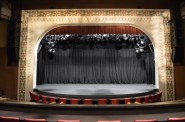 Apr 19th, 2015 by Christopher Hillard
Apr 19th, 2015 by Christopher Hillard
-
The Rise of Suburban Style Homes
 Mar 12th, 2015 by Christopher Hillard
Mar 12th, 2015 by Christopher Hillard


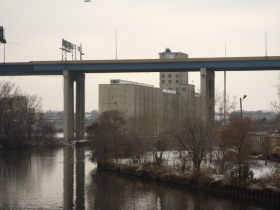
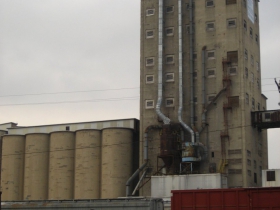
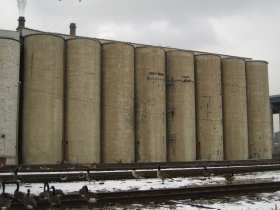
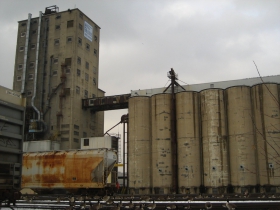
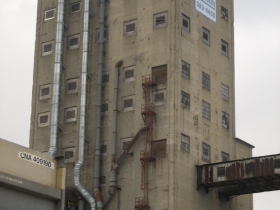
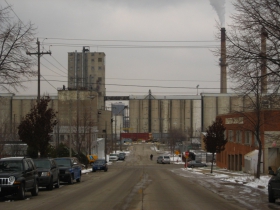
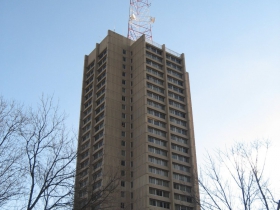
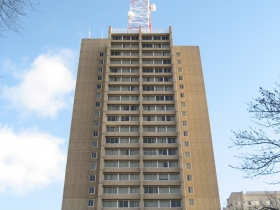
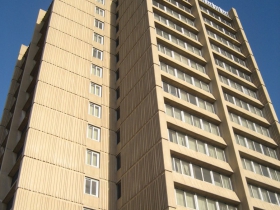
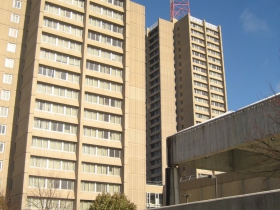
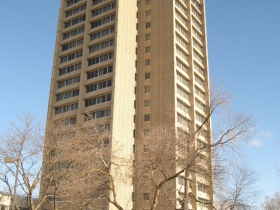
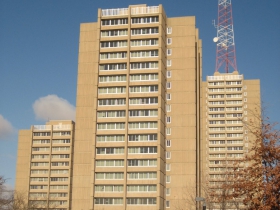
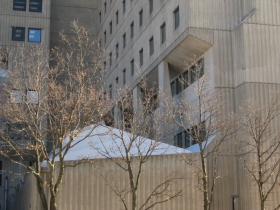
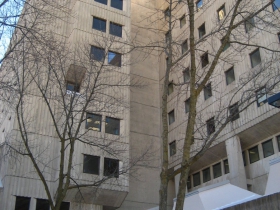
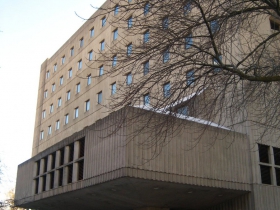
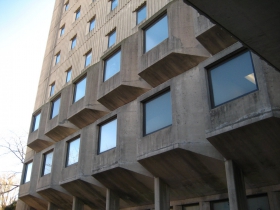
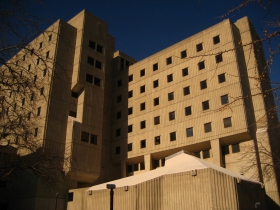
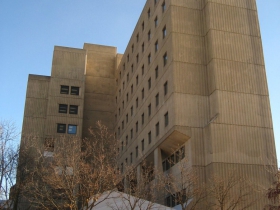
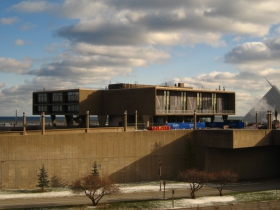
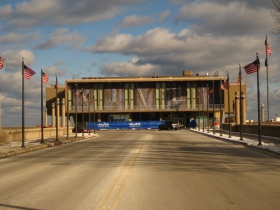
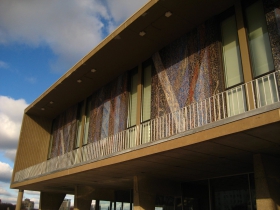
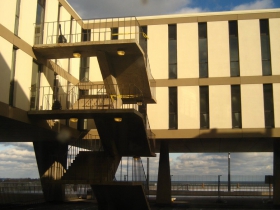
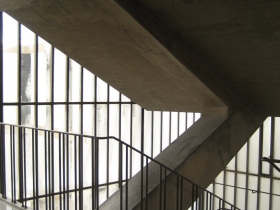
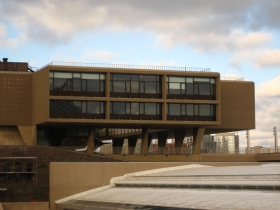
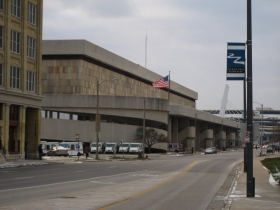
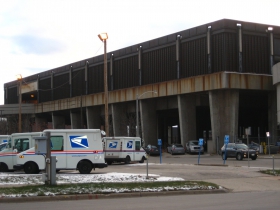
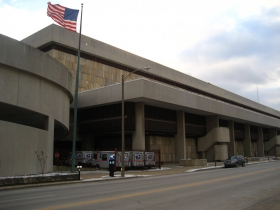
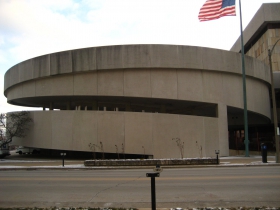
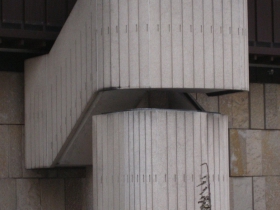
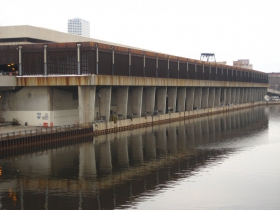
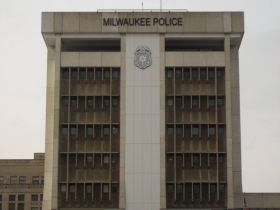
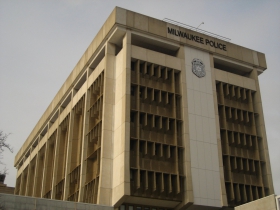
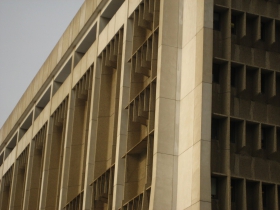

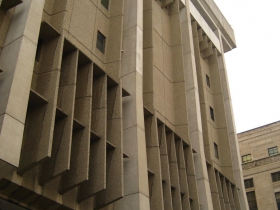
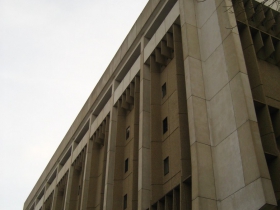
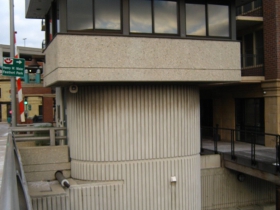
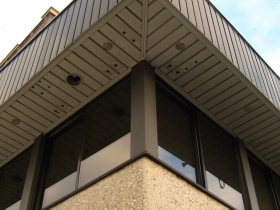
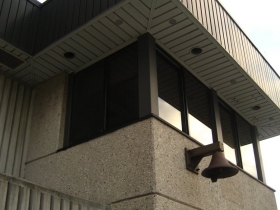
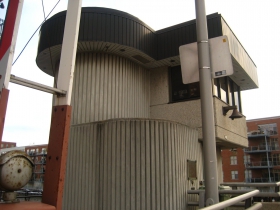
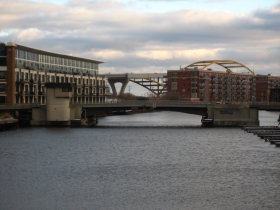
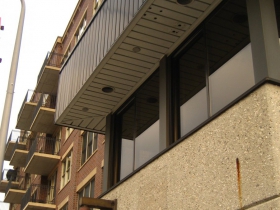
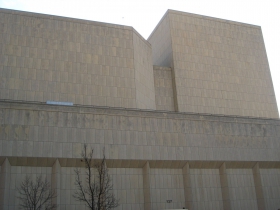
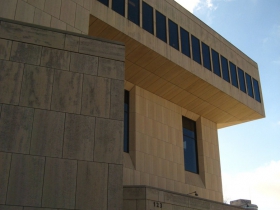
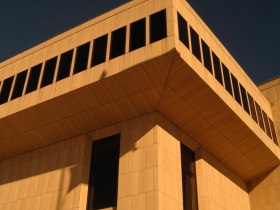
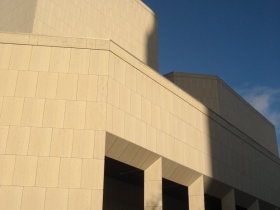
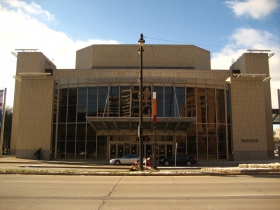
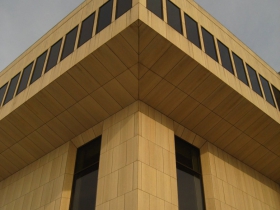
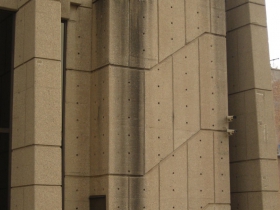
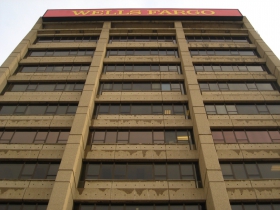
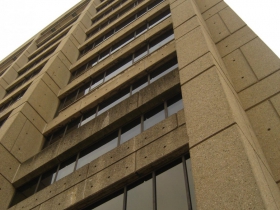
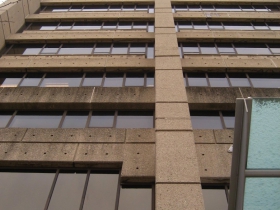
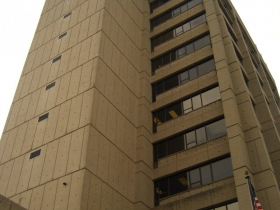
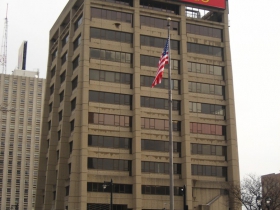
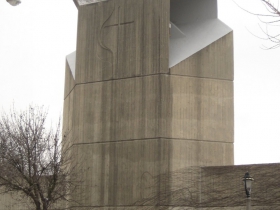
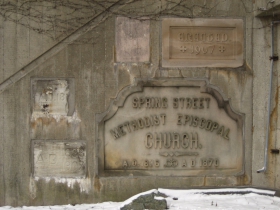
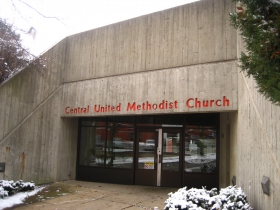
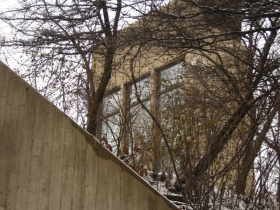

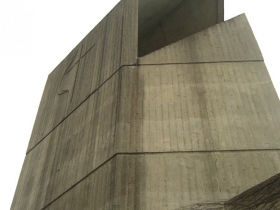

















Brutalist design was the low point in modern urban architecture. It’s no coincidence that many of the brutalist structures stand in the most desolate feeling spaces in the city. The War Memorial being the exception to this, only due to the parts of its design that contradict what most brutalist designs epitomize.
Obviously, I make no secret of how I feel about this style.
I also feel that The Juneau Village Towers fall into this awful style of architecture.
Agreed Andy. “Brutalism” certainly is an appropriate name.
Like I said in the article, brutalism is an understandably a difficult style to like, particularly in light of contemporary views on urbanism. That said, the style did have some notable successes. Juneau Village in Milwaukee and Society Hill Towers in Philadelphia brought some much needed housing to older parts of the city and unlike a number of similar public housing developments were actually quite successful. I would also put forth that the DC subway system is not just brutalism at it’s best, but also just great architecture period. While the public spaces created by brutalists (like the plaza around Boston’s City Hall) are oft maligned Louis Khan’s Salk Institute is a striking counter-example.
A well-written and thought-provoking article. While I’m definitely a bigger fan of the Miesian boxes (neat shout out!), I appreciate the bold attitude of the society that erected these behemoths.
The folks saying these buildings are gaudy and sterile are, I suppose, akin to those in the eighteenth and nineteenth century who would spun the Neoclassical temples of government as being much the same. It may all be appreciated in a century or two as honorable and dignified.
It’s not that brutalism never works, but it’s my second favorite architecture topic to rag on… right behind Gaudi’s Sagrada Familia!
I don’t believe the Juneau Village towers work well… other than the fact it brought residents to an area that needed. But that could have been accomplished with many other styles and forms. The thing about brutalism is that its cheap and it sends a strong message. Unfortunately that message is more akin to the type of message Stalin would have wanted to portray.
Christopher, as you mentioned, corporate structures in the brutalist style are rare. However the one you show here, the Wells Fargo building, is probably the best fit of all of these buildings in using that “message” I was referring to. If you want to portray your financial institution as strong, solid, imposing then that’s a good way to do it.
Oh, forgot to say though… good article, really appreciated your perspectives. It really does hit on what one can appreciate in Brutalism, even if the ideas and designs were horrible. Absolutely horrible.
Harry Weese’s underground Metro stations in DC are indeed great architecture; Weese’s best work. They are like cathedrals; quiet and awe inspiring. There has never been a homicide in the DC subway stations since the first was built in 1975 even though DC itself has often been tops in per capita homicides.
If that is indeed the real John Norquist and you know of any openings at CNU for a talented, intelligent, and all around dashing urbanist, then shoot me a line. I may know a guy.
The Joy of Urban Milwaukee is not only its articles but the quality of its comments (present one excepted) and it’s hard for me to fathom but this marks the second article on architecture read in one day!! Here’s another one for you Christopher and thank you for opening my eyes to how to look at “my” city.
http://www.nytimes.com/2014/12/16/opinion/how-to-rebuild-architecture.html?hp&action=click&pgtype=Homepage&module=c-column-top-span-region®ion=c-column-top-span-region&WT.nav=c-column-top-span-region
That was a really interesting article. It actually reminded me a little of Leon Krier’s critique of contemporary architecture where he contrasted the designs of architecture students with the homes desired by clients, which seem to occupy a completely different universe where it’s still 1920’s and modernism is but a distant dream of a few fringe designers.
Readers are advised to pick up and read a copy of ‘From Bauhaus to Our House’ by the great Tom Wolfe. In less than 200 pages he eviscerates this ‘style’ and its practitioners with satirical wit and elan.Andy (#`1 in this thread) hits the nail on the head.
I’m with most of the commenters here on two points: 1.) I’ve never cared much for brutalism in the general sense, but 2.) This was a fantastic read. Christopher, I have sincerely enjoyed your ongoing series on architecture. It has helped me better appreciate this city I love while helping me attain more of the architectural vernacular I’ve found myself grasping at lately.
@Isral Thank you, that is very kind of you to say. My hope is that these articles give the reader something to think about regardless of their feeling (or, indeed, my own) on the topic.